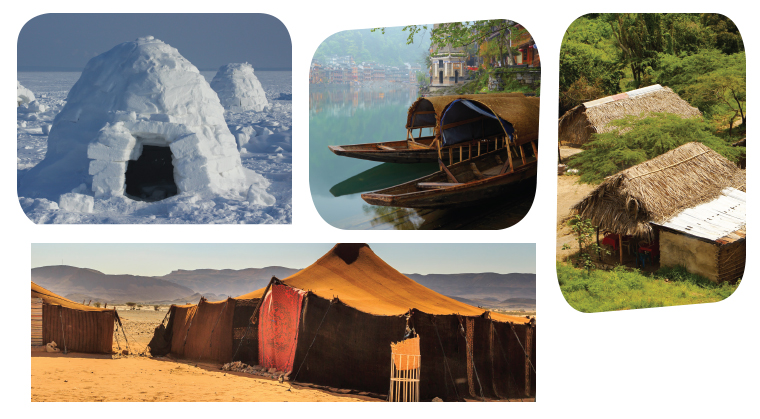Living in Nature


First Stop: The Barren Desert:
Imagine that you’re standing in the middle of the desert. For miles and miles in every direction, all you can see is sand. The sun beats down on your back, and there is no shade in sight. You’re starting to feel thirsty, but unfortunately there are no water fountains sprouting out of the desert. You wonder how to escape this vast sea of sand, but there are no roads leading you back to civilization. How will you survive?
Bedouins are nomadic tribes that live in the deserts of North Africa and the Middle East. In Arabic, the word Bedouin means a “desert dweller.” Bedouins have been living in deserts for centuries and are experts at surviving in this dry, scorching climate.
Bedouins travel through the desert, herding sheep, goats, or camels. They trek through the sands in groups made up of extended family units, sometimes called goums. The head of each goum is referred to as the sheikh, a position that is handed down from father to son, much like kings and princes. Most Bedouins are Muslims who speak Arabic. They typically live in tents that can be assembled and taken apart quickly, for easy travel.
So how do Bedouins do it? How do they survive in such harsh environment, which is sweltering hot during the day and freezing cold at night? How do they obtain food and water in a land with no water or vegetation? And how do they prevent themselves from getting lost when the sand stretches out for miles, and the scenery never changes for days?
Tracking Skills
“Turn right at the corner, and then make a left at the stop sign.” These directions may help you find your way to the supermarket, but they’re absolutely useless in the desert. Bedouins don’t have tools like compasses to help them navigate through the sand. And they certainly don’t have GPS or Waze. Bedouins don’t even bother with terms like “left” or “right” since they’re kind of meaningless when there are sand dunes every which way you turn. Instead, they are experts at reading footprints in the sand, and can tell if a footprint belongs to an animal, man, woman, boy, or girl. But they can’t always rely on following each other’s footprints, because the harsh desert winds often erase them.
Instead Bedouins rely on the sky and the wind to direct them. The sun always rises in the east and sets in the west, right? So the Bedouins use sunrise and sunset as markers to figure out which way to travel. They are also expert astronomers who use the stars as a map to guide them. Due to the hot days and cool nights in the desert, Bedouins tend to stay put during the day and travel at night. So the star-map in the sky works to their advantage.
Bedouins also pay close attention to the desert winds. Sand dunes are sculpted by the harsh winds, and generally all point in a certain direction, based on the wind course. This knowledge can help Bedouins determine which direction to travel.
(Excerpted from Mishpacha Jr., Issue 746)
Oops! We could not locate your form.







